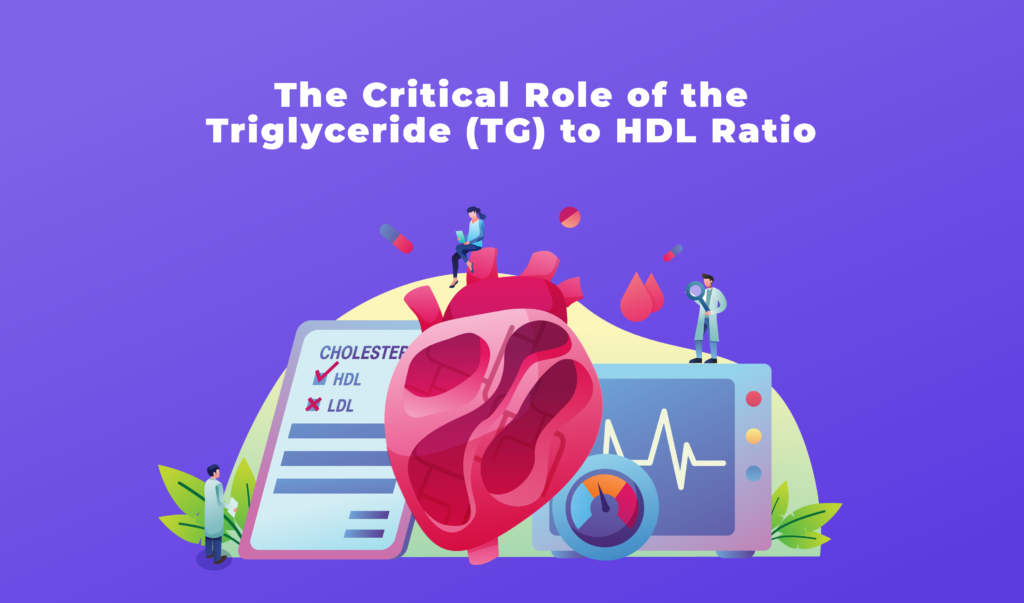
Understanding the Triglyceride to HDL ratio is crucial in tracking cholesterol and safeguarding heart health. More than just the total cholesterol count, it’s essential to recognise how metabolic syndrome and insulin resistance play a significant role in heart disease risks. This article explores the profound implications of this ratio for maintaining optimal heart health.
The Critical Role of the Triglyceride to HDL Ratio
The Triglyceride to HDL ratio is a key metric, acting as a highly robust predictor of heart attack risk. It often offers more predictive value than other cholesterol ratios, accounting for potential heart health issues missed by stand-alone cholesterol measures. This ratio, therefore, empowers you with more actionable insights into your cardiovascular health.
Research indicates that the Triglyceride to HDL ratio is a helpful marker for insulin resistance and atherosclerosis, especially among individuals who are prediabetic. Without proper management, these conditions can pave the way to more serious cardiovascular issues.
The ideal Trig/HDL ratio is below 2. On the other hand, a ratio above 3.8 invariably suggests a higher risk, requiring immediate attention and potential lifestyle modification.
Discover how improving your albumin/creatinine ratio can also enhance your kidney function for overall better health. Read our detailed guide here: Albumin / Creatinine Ratio – How You Can Improve Your Ratio and Kidney Function?
Delving Deeper into the Implication of Ratios
At this point, you might wonder what exactly these ratios signify? While the concept of tracking cholesterol can be intricate, considering ratios simplifies the process, offering an accessible way to gauge your heart disease risk categorisation.
Two individuals could share the same total cholesterol level, but their Triglyceride to HDL ratios might diverge significantly, leading to different risk categorisations. While ratios present easier-to-understand figures, remember that they don’t represent the exhaustive picture of cardiovascular health.
The advantage of ratios is that they are generally easier to understand and remember than the individual cholesterol measures. Most healthcare professionals look at total cholesterol first, then calculate your ratios if your total cholesterol levels are high.
However, great care should be taken when interpreting these numbers. While cholesterol ratios provide a broad understanding of heart disease risk, they do not address all complexities. Most importantly, metabolic syndrome and insulin resistance are significant causes of heart disease, involving a cluster of risk factors—high blood sugar, excessive belly fat, increased blood pressure, and abnormal cholesterol or triglyceride levels—that significantly elevate your risk of heart disease. Hence, while a healthy Triglyceride to HDL ratio is important, it is critical to also regard overall metabolic health.

A seemingly healthy Triglyceride to HDL ratio does not necessarily confer guaranteed cardiovascular health, particularly if aspects like metabolic syndrome and insulin resistance are left unchecked. Therefore, to ensure well-rounded cardiovascular health, it is essential to consider both the Triglyceride to HDL ratio and overall metabolic health.
In conclusion, when it comes to cardiovascular health, the appropriate steps involve understanding the significant role of the Triglyceride to HDL ratio, considering total metabolic health, and tailoring lifestyle modifications accordingly.
To extend your understanding or seek assistance on your health needs, feel free to explore our collection of articles or connect with us for a dedicated session.






